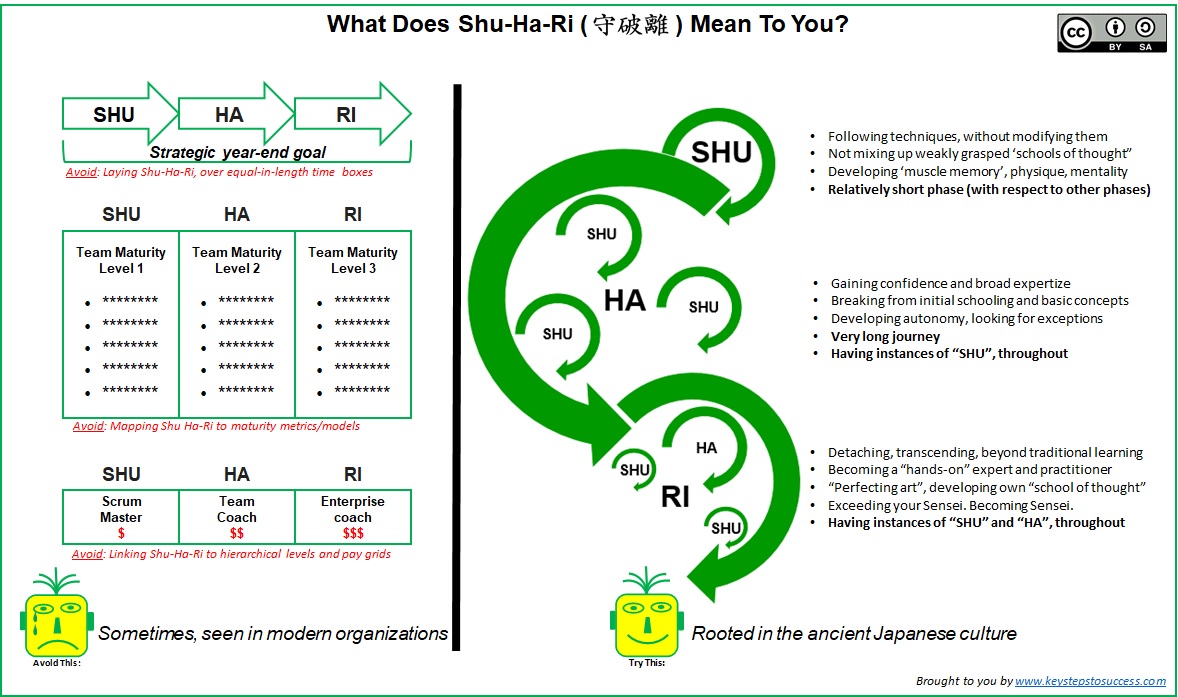We have to be careful, when applying the ancient Japanese martial art concept ShuHaRi (stages of learning to mastery), to modern corporate structures and organizational dynamics, when talking about agile:
Some examples of a misuse:
- Laying ShuHaRi over fixed-in-scope strategic goals, while representing each phase (Shu, Ha, Ri) as a fixed-in-length time-box. This gives an impression of a linear, pre-determined, phase-gated progression.
- Mapping ShuHaRi to agile maturity model levels (e.g. Shu=Level 1, Ha=Level 2, Ri=Level 3). There is a risk, that in pursuit of a higher maturity (linked to rewards), teams may be tempted to game the system. Also, Ha and Ri stages are longer and more complex than Shu. For example, there are multiple instances of Shu, within Ha, while both Shu and Ha could be present within Ri.
- Linking ShuHaRi to agile roles that are, subsequently, linked to compensation levels, defined by traditional organizational structures, leads to unwanted ‘agile hierarchies’.
Please, note:
ShuHaRi is a very long, non-linear journey that consists of phases that differ in duration and complexity. Oversimplifying it, to fit the corporate language, is not advisable.
Here is one great reference to better understand ShuHaRi.

